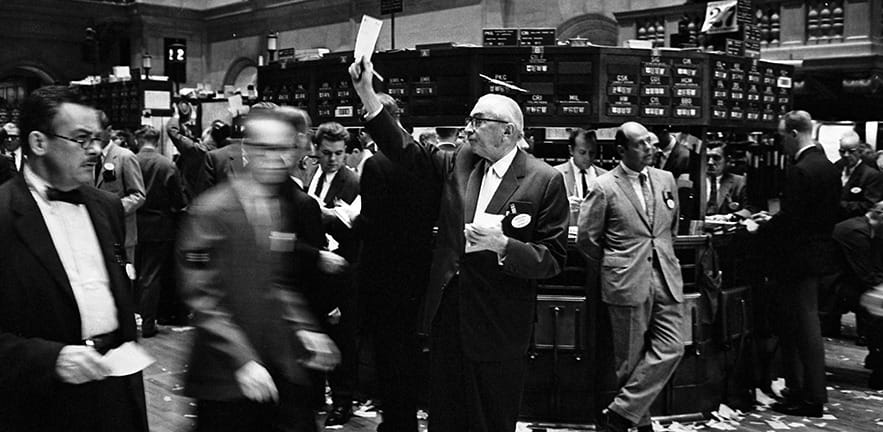Overview
The Global Investment Returns project represents a continuing study of long-run asset returns on stocks, bonds, bills, inflation, currencies and GDP since 1900. It spans 23 countries, covering over 98 per cent of global stock market capitalisation in 1900. Led by Professor Elroy Dimson (University of Cambridge), Professor Paul Marsh (London Business School) and Dr Mike Staunton (London Business School), the dataset is updated, extended and analysed annually and has become a reference work for investors worldwide. This dataset underpins a worldwide assessment of the magnitude of the equity and bond risk premia, and is used to research many different questions relevant to investment, finance and regulation.
A Yearbook has been published annually as part of the Global investment Returns Project. In 2017 this was prepared for the ninth time by the Credit Suisse Research Institute, in collaboration with Professor Elroy Dimson, Professor Paul Marsh, and Dr Mike Staunton. Each year the Global Investment Returns Yearbook draws from this detailed and complete dataset stretching back 117 years to examine a set of key investment themes.
Please read through the different year tabs to explore the key themes and questions analysed.

Publications
Dimson, E., Marsh, P. and Staunton, M. (2017) “Factor-based investing: the long-term evidence” Journal of Portfolio Management, Special Issues.
2017 themes
Download the 2017 Global Investment Returns Yearbook
Uninterrupted dominance of the US equity market
Between 1900 and 2000, equities were by far the highest-performing asset class compared to bonds or money market papers. On a global basis, shareholders achieved an annual return of 5.1%. The risk-free money market, in contrast, generated 0.8% per year while bonds generated 1.8%. These are real revenues, meaning they have been adjusted for inflation.
A very different picture is shown by the period from 2000 to 2016, which saw three equity market crashes and a dramatic fall in interest rates: Equities returned 1.9% per year, while the money market came in below zero at -0.5% per year. Investors who invested in bonds, by contrast, achieved an annual return of 4.8%.
Investors experienced the best of all worlds in the 20 years preceding the millennium change. From 1980 to 1999, the return level for all asset classes was higher than before and afterwards. Equities earned 10.6% per year, bonds earned 6.6%, and money market papers still earned 2.8%.
Time for equities?
Until one year ago, there was a search for investment ideas that were most likely to be successful in a deflationary environment. In the meantime, the political environment has changed and, therefore, so has the investment themes. Deflation fears have been replaced by the expectation of a return of slightly rising prices. The question is no longer whether and to what extent government bond returns can fall. Rather, the question is whether we have arrived at the end of the 30 year Bull Run in the bond market and thus whether the below average performance of equities compared to bonds is over.
Mild inflation is favourable for equities
Equity investors don’t need to worry about a slight rise in inflation. First, corporate earnings and dividends are rising in tandem with prices in general. Second, history shows that the transition from a slightly deflationary environment – as has prevailed over most of the past decade – to one of mild inflation constitutes a favourable backdrop for equities. This would speak in favour of the long overdue reallocation of assets from bonds to equities.
Decrease of risk premium
However, equity risk premiums are likely to be lower in the future. The risk premium is the additional return that shareholders receive for accepting a greater degree of risk than investors in the money market. Since real interest rates remain at low levels, this is likely to depress returns on all asset classes – including equities. Given that equity investors made a 4.2 percentage point higher return than money market investors in the 1900–2016 period, the authors predict an additional return of just 3 to 3.5% in the years ahead.
The conclusion reached by the 2017 Yearbook is that the risk premiums on equities are unlikely to be as high in the future as they have been. From the vast amounts of data, interesting observations can be made and some conclusions can be drawn as to the further development of the various asset classes.
The risk premiums on equities are unlikely to be as high in the future as they have been.
2016 themes
In the 2016 Yearbook, Professors Elroy Dimson and Paul Marsh and Dr Mike Staunton examine two issues:
- first, the reaction of financial markets to interest-rate rises and cuts
- second, the investment performance of trading strategies over interest-rate hiking and easing cycles.
Download the 2016 Global Investment Returns Yearbook
Does hiking damage your wealth?
Based on more than a century of evidence on US interest rates (85 years for the UK) it is clear that announcement-day impacts are typically small, especially for well-signalled policy moves. Nevertheless, rate rises are on average bad news for equity and bond investors. In an analysis of annual data covering 21 countries over the period 1900–2015, the authors find that real equity and bond returns tend to be higher in the year following rate falls than in the year after rate rises.
Cycling for the good of your wealth
Across a broad set of asset classes – including equities, bonds, currencies, real estate, precious metals and collectibles – the findings point to substantial differences between returns during hiking and easing cycles. Historically, no asset class has offered contracyclical returns in relation to interest-rate changes. Smart beta is attracting a lot of attention at present, and the study reports that the rewards from such strategies tend to shrink when interest rates are rising.
The equity risk premium is the return on equities in excess of the return on cash. In the USA, the risk premium during periods of tightening interest rates was just 1.8% per annum, compared with 8.8% per annum. during periods when rates were falling. In the UK, the entire equity premium was earned during loosening periods, and investors would have been better off being out of the equity market while interest rates were rising.
Until late last year, no American or British investment professionals in history, in their 20s and only a few in their early 30s, had experienced a rise in their domestic interest rate during their working lives.
Related news and insights
Modest inflation rises, based on historical precedent, should not adversely affect the real return on equity investing, says annual Credit Suisse Global Investment Return Yearbook 2017 co-authored by Elroy Dimson of Cambridge Judge. With inflation at a multi-year high in the US and rising in Britain due to Brexit, equity investors who have enjoyed a healthy historical premium over cash "should not fear modest rises in inflation," according to long-term lessons outlined in a report on investment returns co-authored by Elroy Dimson of Cambridge Judge Business School. The Credit Suisse Global Investment Returns Yearbook 2017, issued today (21 February), looks at returns on equities, bonds, bills and other assets for the 117-year period from 1900 through last year. Equities outperformed cash by 4.2 per cent on average per year, and are expected to enjoy a somewhat lower premium of 3 per cent to 3½ per cent in the long term given today’s low interest rates, the report said. But based on historical precedent, a modest inflation rise is not expected to adversely impact the real return on equities. Consumer prices in the US rose in January at the fastest pace in nearly five years, standing at 2.5 per cent higher…
Historical analysis of 21 countries over the past 116 years shows real equity and bond returns higher after interest rate cut than rate rise, says study co-authored by Professor Elroy Dimson of Cambridge Judge Business School, published by Credit Suisse. A historical analysis of 21 countries over the past 116 years (1900-2015) shows that real equity and bond returns tend to be higher following an interest rate fall than after a rate rise, according to a study co-authored by Professor Elroy Dimson of Cambridge Judge Business School. The study published today by bank Credit Suisse also found, based on more than a century of evidence on US interest rates (85 years for the UK), that the announcement-day impact on equity and bond returns is typically small, and especially for rate changes that are well-signalled in advance in policy terms. These historical trends are important to understand for young people in investment and finance, says Professor Dimson, chairman of the Newton Centre for Endowment Asset Management at Cambridge Judge Business School and Professor Emeritus at London Business School. "Until late last year, no American or British investment professionals in their 20s (and only a few in their early 30s) had experienced…
Is there a price to having principles? The best-performing stocks since 1900 have been tobacco in the United States and alcohol in the United Kingdom, according to a review co-authored by Elroy Dimson, chairman of the Newton Centre for Endowment Asset Management at Cambridge Judge Business School. Investors are under growing pressure to exercise responsible investing, but a review of the rationale, costs and benefits of responsible investing, issued today in the 2015 Credit Suisse Global Investment Returns Yearbook, suggests that “sin” can sometimes pay. Drawing on stock market returns since 1900, the study confirms that investments in sectors and countries some consider unethical have tended to outperform over the long term and more recent past. The authors also highlight that a responsible investing strategy based on ethical screening of sin stocks may unavoidably contribute to this outperformance. Dimson illustrates this paradox: If a large enough proportion of investors avoid sin businesses, their share prices will be depressed, thereby offering the prospect of elevated returns to those less troubled by ethical considerations. Therefore, ironically, responsible investors may be partly responsible for the higher returns from sin. The authors report that the expected financial impact of modest exclusions is generally small.…




